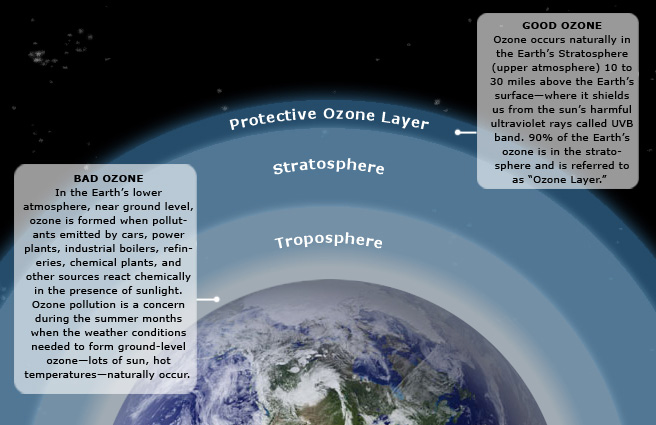Biodiversity & Environment
Low Ozone Over Brahmaputra River Valley
- 11 Sep 2020
- 3 min read
Why in News
Recently, scientists at the Aryabhatta Research Institute of Observational Sciences (ARIES), Nainital (Uttarakhand) have evaluated the near surface ozone in the Brahmaputra River Valley (BRV).
- ARIES is an autonomous research institute under the Department of Science and Technology (DST), Government of India.
Key Points
- Scientists analysed the variability of ozone (O3) and other air pollutants over the BRV region.
- They assessed seasonal characteristics of ozone to identify the emission source of ozone and its precursors, especially methane (CH4) and non-methane hydrocarbons (NMHCs).
- NMHCs such as ethane, ethene, propane, propene, etc. play an important role in controlling ozone concentrations.
- They also studied the relationships between the meteorological parameters like air temperature, wind speed, solar radiation, soil temperature, rainfall, etc. and ozone in a tropical setting.
- Findings:
- Scientists have found relatively low concentration of ozone over BRV (Guwahati - Assam) compared to the other urban locations in India.
- The pattern of O3 concentrations in the BRV indicated that it was strongly influenced by local oxides of nitrogen (NOx) sources with an adjacent national highway being the likely major source.
- The mean ventilation coefficient was greater than 6000 m2s during the day in the pre-monsoon season indicating pollutant dispersion.
- The ventilation coefficient, which is the product of mixing depth and the average wind speed, is an atmospheric condition which gives an indication of the air quality and pollution potential i.e. the ability of the atmosphere to dilute and disperse the pollutants over a region.
- The higher the coefficient, the more efficiently the atmosphere is able to dispose of the pollutants and better is the air quality.
- Low ventilation coefficients lead to poor dispersal of pollutants causing stagnation and poor air quality leading to possible pollution related hazards.
- High O3 winter concentrations were observed, likely driven by local biomass burning providing reactive volatile organic compounds (VOCs) that contributed to ozone formation.
- VOCs are compounds that have a high vapor pressure and low water solubility.
- Many VOCs are human-made chemicals that are used and produced in the manufacturing of paints, pharmaceuticals, and refrigerants.
- VOCs are common ground-water contaminants.
- In the pre-monsoon season, an impact of solar radiation (SR) on the photochemical formation of O3 was observed.
- Tropospheric, or ground-level ozone, is created by chemical reactions between NOx and VOC.
- It usually increases when pollutants emitted by cars, power plants, industrial boilers, refineries, chemical plants, and other sources chemically react in the presence of sunlight, impacting human health.







